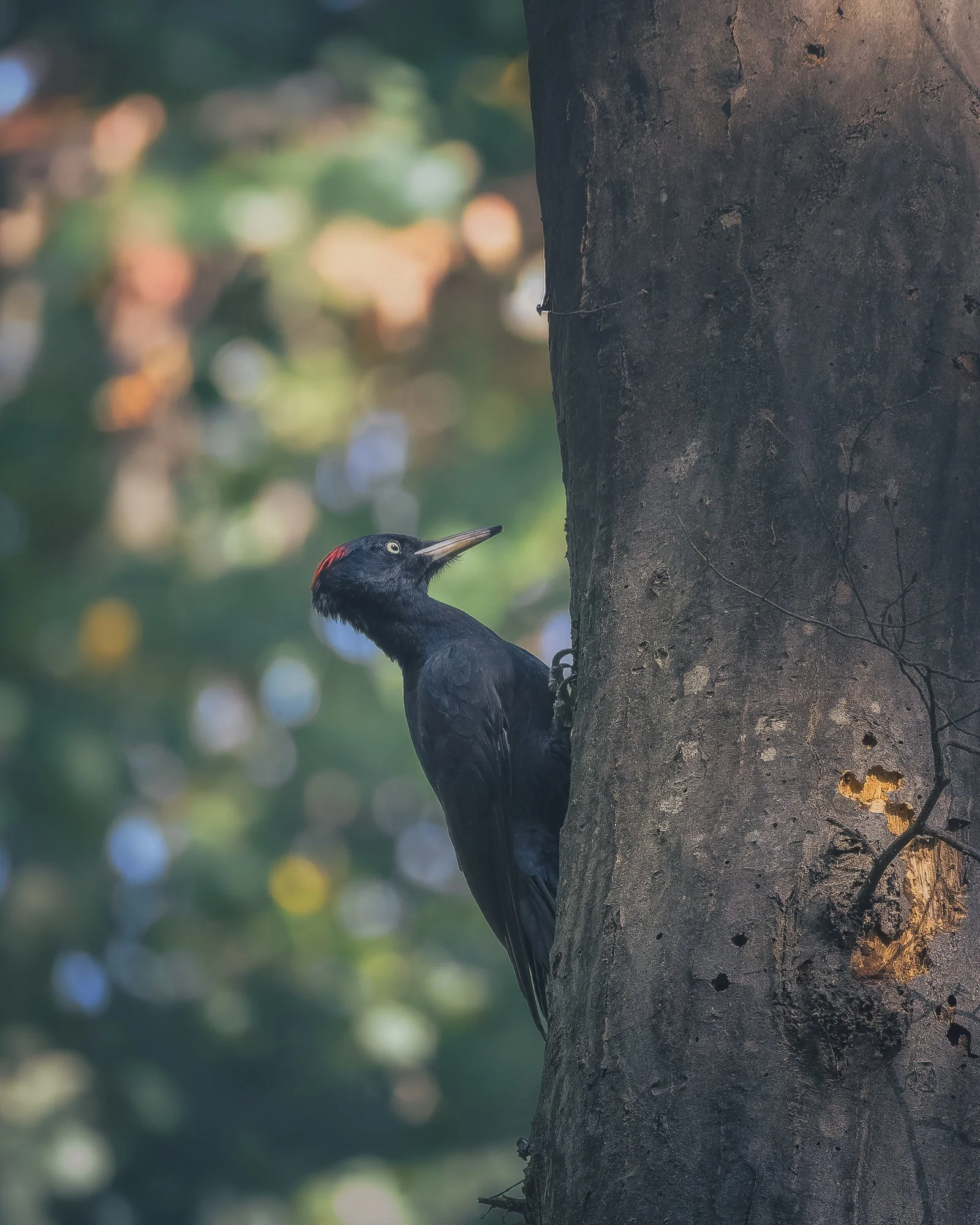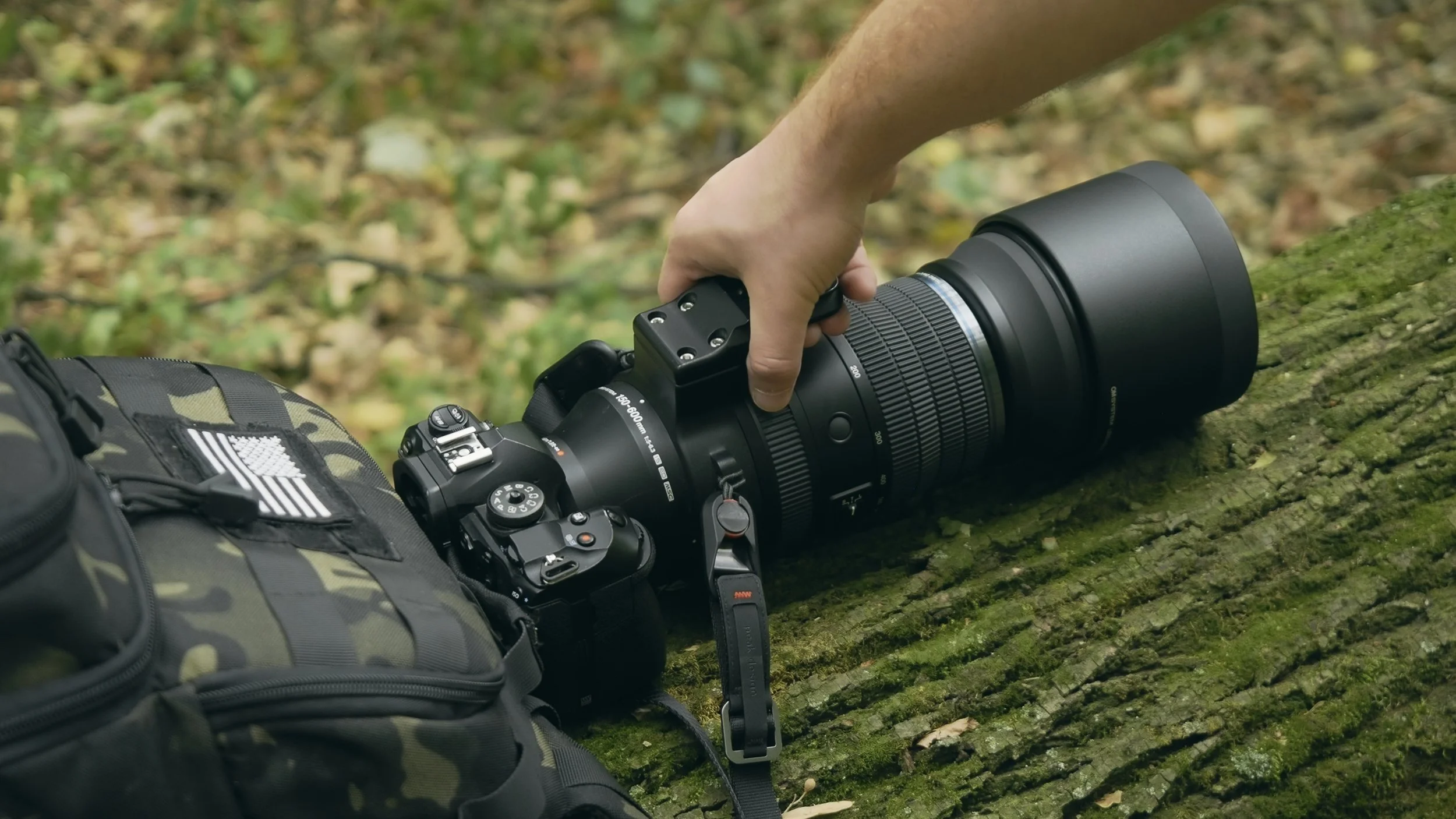The OM System 150-600mm: A Dream Lens?
I've been shooting birds in Romanian forests for months now, and this lens has blown my mind. And I decided to write this short article to tell you why this happened. The first time I shot handheld at 600mm, I thought something was wrong. The viewfinder was too stable. I'm used to fighting camera shake, but this lens just... doesn't shake.
I know that OM SYSTEM OM-1 and their PRO lenses have a great stabilization, but at 600mm (1200mm full frame equivalent) I was expecting this lens to be unusable. And I was so wrong…
I can shoot at 1/125s at 600mm and get sharp results. Let that sink in. That's 4-5 stops better than what the old "1/focal length" rule says is possible. And this system delivers, especially when paired with the OM-1 body.
For me, having this level of stabilization means 3 things:
I can lower my ISO in challenging light & get cleaner images – especially because this lens is not that fast. It’s a F/5-F/6.3 variable aperture lens.
Shoot in darker forests without a tripod
Capture birds in flight handheld all day without (much) fatigue. You can check the vlog episode below to see how it felt after 2 hours of shooting birds & walking 10,000 steps.
For me, this stabilization isn't just good, but it's game-changing for wildlife work. The 600mm reach is also a great advantage. While any small shake can become visible in the wrong conditions & with the wrong settings, it is pure magic. As a wildlife photographer, here what this insane reach means to me:
Less disturbance to wildlife (you stay further back)
Access to subjects that were previously impossible
No need for teleconverters that kill sharpness (and this lens is very sharp)
I’m not just getting closer, I’m capturing behavior that skittish birds would never show if you were physically nearer. If I was to be pixel-peeping the images produces with this lens at 100%, I could count individual feathers. Eye detail is crisp. The gradation in plumage is there. Nothing is mushy.
At 150mm, it's sharp wide open. At 600mm, it's sharp wide open. The consistency across the zoom range is remarkable. I've stopped worrying about "sweet spots" and I feel the whole lens is the sweet spot.
Compare this to budget zooms where you're constantly compromising: "Don't shoot past 400mm," or "Stop down to f/8 for sharpness." With the 150-600mm, you just shoot & it performs. And, even though this is not a PRO lens, it feels expensive. But the moment you pick it up, you understand why.
The weather sealing is comprehensive. I've shot in rain and dusty conditions. Zero issues. The zoom ring is smooth and dampened perfectly. The buttons on the side to allow a smooth zoom or a faster zoom are a great asset to have on this lens. And the tripod collar is rock solid.
It's not lightweight (you'll notice it on a full day), but the weight feels purposeful, not excessive. Every gram is there for a reason I suppose. It has great optics, stabilization, and durability.
There is one thing that bothers me though. And I’m sure it’s just me, and my old habits, but I feel that the focus ring placement makes it hard to use when the lens is extended. It's right where my left hand naturally rests when supporting the lens. I've accidentally bumped it out of autofocus several times during critical moments.
It's a small complaint, and honestly, it's probably just my grip style. You might never notice it. But after a few missed shots, I trained myself to hold it differently. I've tested this lens a lot: on kingfishers on a bright day, owls in dark forests, small birds at distance, and I love that it delivered every time.
For wildlife photography, where sharpness and reach are non-negotiable, this lens has a great keeper rate. But you’ll have to work out the right settings and understand that even the best of lens, at 1200mm equivalent, require decent amount of light and a solid firm grip.
If you're serious about wildlife photography and shoot OM SYSTEM, or consider switching to a system that’s light, accessible and has pro-performance, this lens should be on your shortlist. Yes, it's an investment, but it's one that immediately elevates your work.
The stabilization alone saves shots that would otherwise be impossible. The reach opens up new subjects. The sharpness ensures those subjects look professional.
Is it perfect? No lens is. But it's as close as I've found for serious wildlife work in the field.









